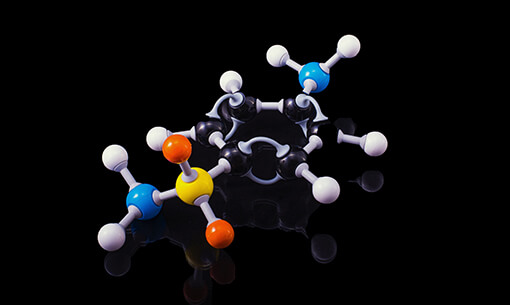Hi! It’s konkaz (@konkazuk) here.
With this article, we’re going to make an investigation into what is called “participle”.

Its form must be included in the sentences we create while we study even if we have never tried to find out its definition.
Your head will be cleared by sorting out this uncertain spot.
“Participle“ is, so to speak, just like “spinach” that gets caught in your teeth.
So, let’s get rid of it by reading this article.
What is “participle” in the first place?

Including compulsory education, if you have studied English, you must have come across the terms such as “genzai-bunshi”, “kako-bunshi” and “bunshi-koubun”.
These are called “present participle”, “past participle” and “participle clause” in English in order, and these “participle” is equivalent of “bunshi” in Japanese.
There are two types of participles, which are…
- The present participle
(the form that ends in “-ing”) - The past participle
(the form that mostly ends in “-ed”)
And basically, these are the shapes that have been transformed from the “verb” form for some purposes.
They typically include the shape of verb just like “laughing” or “walked”, but…
they are actually something else and are not verbs any more.
*Incidentally, “participle clause” is one of the forms that include the usage of “participle”.
Well… anyway, let’s see what sort of roles these “something else” will play…
The function of an adjective

Even though we are not aware of what they are, we are using them while we speak in Japanese.
For instance,
“naiteiru-aka-chang” (=crying baby)
or
“yude-tamago” (=boiled egg).
It’s these parts “naiteiru” (crying) and “yude” (boiled) that are called “participle”.
“crying” can be translated with the nuance of “doing” [Present participle],
and “boiled” can be translated with the nuance of “done” [Past participle].
And what kind of role do they play when they are modifying “noun”?

I guess you already know the answer…
They are playing a role as an “adjective” that describes “noun” just like… a “baby” with what kind of action? or an “egg” with what kind of condition?
So, basically, a “participle” can be regarded as…
the form that has been transformed into the shape of “doing” [Present participle] or the shape of “done” [Past participle] from the “verb” form so that it can function as an “adjective”.
Examples of “Present participle” that functions as adjective

“Present participle” is the one that has been transformed from verb form that functions as “do” into the form that works as “doing”, but as a peculiar fact, consciously or unconsciously, we Japanese often take English “verb” forms as “noun” and use them by blending with Japanese participle.
(As a matter of fact, there are lots of “verb” form that can also work as “noun”, but let’s leave this fact aside for now…)
For instance, a word “boil” is generally used as verb, literally “to boil” in English, however we Japanese purposely treat “verb” forms as “noun” and add “suru”, which means “do” in Japanese, to the verbs, and this will make it as “boil-suru”.
…and “boiling” will be “boil-shiteiru” and “be boiled” will be “boil-sareta”
Considering the usage of “participle”, I think this way of ours matches up pretty well with how it works with English way.
To create the form of “present participle”, since there is no irregular changes, we can simply attach “ing” at the end of each verb.
For example…
- boil-shiteiru water
➡︎ Boiling water - bleed-shiteiru cat
➡︎ Bleeding cat - grow-shiteiru population
➡︎ Growing population - sleep-shiteiru lion
➡︎ Sleeping lion - float-shiteiru boat
➡︎ Floating boat - annoy-shiteiru phone call
➡︎ Annoying phone call - surprise-shiteiru news
➡︎ Surprising news
We rescued a bleeding cat from the gutter.
Somebody is sleeping on the floating boat.
Examples of “Past participle” that functions as adjective

“Past participle” is the form that has been transformed into the shape of “done” from the verb form “do”.
Just like how it works with present participle, take it like how we treat “verb” forms as “noun” and mix with Japanese version of “done” (= sareta) such as “pack-sareta-lunch” or “spoil-sareta-kodomo.”
Generally, the form is created by attaching “ed” at the end of the verbs.
- smoke-sareta salmon
➡︎ smoked salmon - steam-sareta rice
➡︎ steamed rice - extend-sareta deadline
➡︎ extended deadline - colour-sareta copy
➡︎ coloured copy - melt-sareta chocolate
➡︎ melted chocolate - close-sareta door
➡︎ closed door - liberate-sareta prisoners
➡︎ liberated prisoners
The price of smoked salmon has gone up.
Her hands were covered with melted chocolate
There are also irregular types that does not end in “-ed” with past participle.
Some of them do not change their shape (staying the same as verb form) at all, so unfortunately you need to memorise these one by one…
- freeze-sareta food
➡︎ Frozen food - break-sareta leg
➡︎ broken leg - mistake-sareta man
➡︎ mistaken man - spread-sareta wings
➡︎ spread wing - upset-sareta lady
➡︎ upset lady - pay-sareta holiday
➡︎ paid holiday - bite-sareta hand
➡︎ bitten hand
He was dragging his broken leg
How many paid holidays a year does your company provide you?
Forming verb tense by combining “be verbs” with “participles”

Here, we are going through 3 fundamental types of verb tense that are created by combining “be verb” with “participle”.
① Be verb + present participle (continuous)

”Continuous (or progressive) form” is created by combining “be verb”, which indicates a state of being (to be), with “present participle”, which is a transformed shape of verb form that ends in “-ing”.
When the present form [am / are / is] of “be verbs” are applied, we can express the activities at the moment of speaking. (Present continuous)
I am studying English.
You are wearing new shoes.
She is playing volleyball with her friends now.
When the past form [was / were] of “be verbs” are applied, we can express the activities that was going on at some point of the past. (Past continuous)
You were wearing new shoes in the party.
She was playing volleyball with her friends yesterday.
When the simple future form “will be” is applied, we can express unfinished activities that will be in progress at a time later than present moment. (Future continuous)
I will be flying to Japan tomorrow evening.
She will be playing volleyball with her friends next Sunday.
② Be verb + past participle (passive)

”Passive voice(or form)” is created by combining “be verb”, which indicates a state of being (to be), with “past participle”, which is a transformed shape of verb form that generally ends in “-ed” but with several types of exceptions.
“Present simple passive” is created by using the present form [am / are / is] of “be verbs” followed by past participle.
I am delighted to see you.
Foxes are regarded as very cautious animal.
Wearing a mask in a crowded space is encouraged by the government.
“Past simple passive” is created by using the past form of “be verbs” [was / were] of “be verbs” followed by past participle.
I was delighted to see you.
Those old houses were built two hundred years ago.
“Future simple passive” is created by using simple future form “will be” followed by past participle.
You will be caught by the police if you don’t put your clothes on immediately!
She will be escorted by some security guards once she arrives.
③ Have + past participle (perfect form)

The “perfect form” is slightly different from the other two types that were mentioned earlier, because it is used to suggest a link between the present and the past, but anyway…
“Present perfect from” is created by using [have / has] followed by past participle.
I have finished my dinner.
He has completed his task.
“Past perfect from” is created by using “had” (the past form of have / has) followed by past participle.
I had finished my dinner by then.
He had completed his task by last Wednesday.

Well, this is it.
We have gone through “participle” this time.
When you check some verbs on the internet, we usually find forms like “present tense”, “present participle”, “past tense” and “past participle”, and I hope distinction of these has become much clearer than before by reading through this article.
Thank you very much for reading till the end.
konkaz

